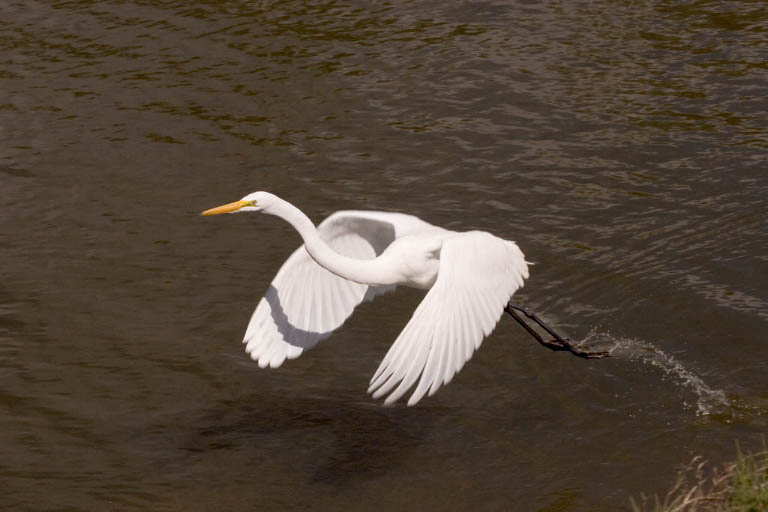Spring is a wonderful time at Santa Teresa park with dramatic wildflower displays. It is fascinating to see the variety of wildflowers there. Some, like the Popcorn flower and the Jewelflower, I have not seen on any of my hikes in other parts of the Bay area. Photographs in the first half of this gallery were taken three years ago. There is a dramatic variety of wildflowers seen - California Gilia, Checker-bloom, Cream cups to name a few.
The display of wildflowers this year is very different - dramatic poppy spreads, an unusual Chia color and the Buckeye butterfly. It makes one aware of how much of a part weather and ecology play in the survival of these wild plant species. This year we had much less rainfall, so the variety of wildflowers growing was much reduced.
After photographing these flowers, I was coming to the end of the trail, weary after a hot day. I was looking forward to some shade and lunch, and hastening my step. Suddenly a solitary splash of color on a dry hillside caught my eye. It was one of the most beautiful displays of a Mariposa Lily I have seen. It being a cluster of three made it all the more unusual and special, and made the entire hike worthwhile.
As I have spent hours identifying the flowers by name, it has been fascinating to study their shapes, colors and environment, and means of survival. I hope these photographs will provide you with a window into the existence of these small yet vital elements of nature.
The display of wildflowers this year is very different - dramatic poppy spreads, an unusual Chia color and the Buckeye butterfly. It makes one aware of how much of a part weather and ecology play in the survival of these wild plant species. This year we had much less rainfall, so the variety of wildflowers growing was much reduced.
After photographing these flowers, I was coming to the end of the trail, weary after a hot day. I was looking forward to some shade and lunch, and hastening my step. Suddenly a solitary splash of color on a dry hillside caught my eye. It was one of the most beautiful displays of a Mariposa Lily I have seen. It being a cluster of three made it all the more unusual and special, and made the entire hike worthwhile.
As I have spent hours identifying the flowers by name, it has been fascinating to study their shapes, colors and environment, and means of survival. I hope these photographs will provide you with a window into the existence of these small yet vital elements of nature.

